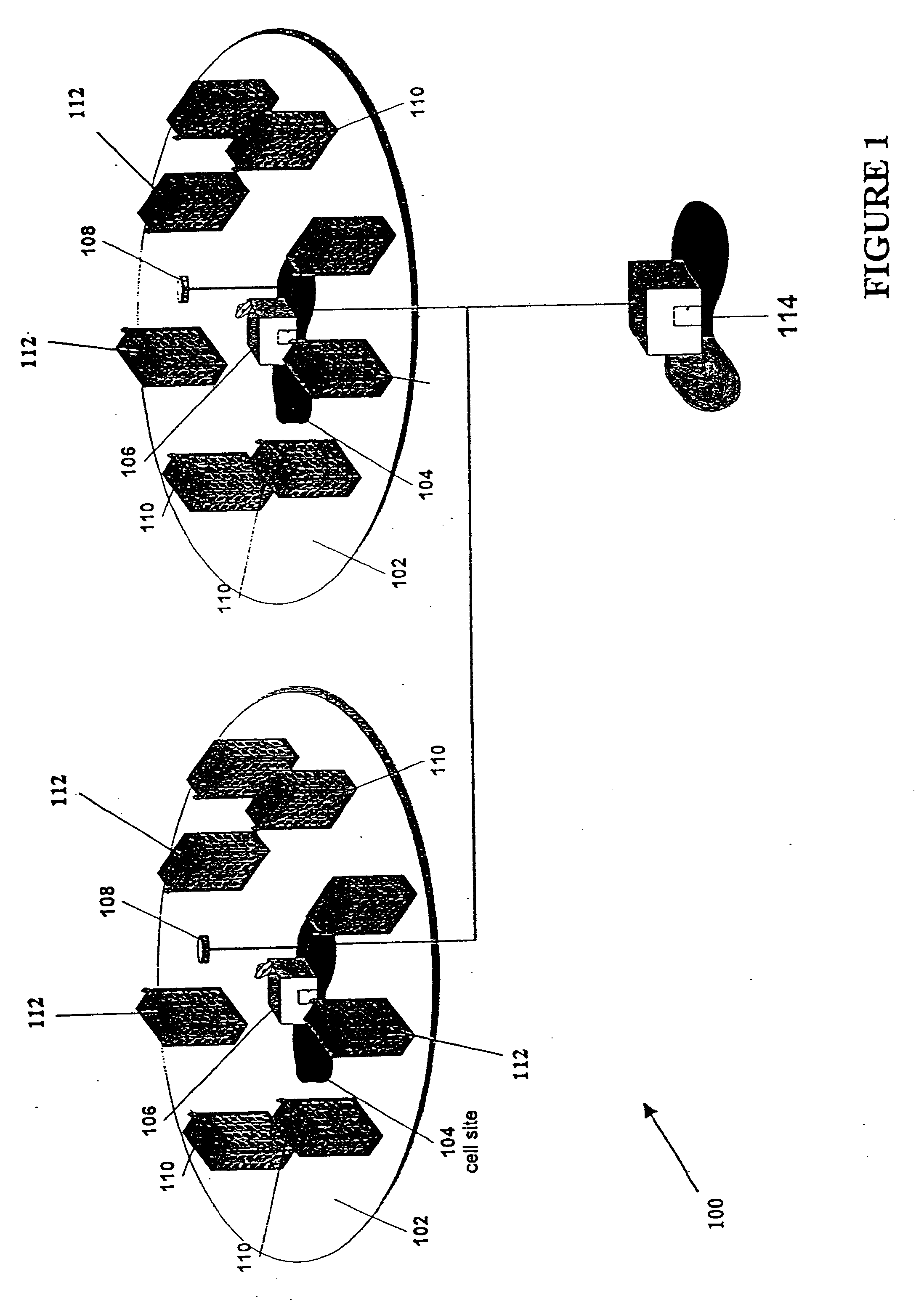Method and system for adaptively obtaining bandwidth allocation requests
- Summary
- Abstract
- Description
- Claims
- Application Information
AI Technical Summary
Benefits of technology
Problems solved by technology
Method used
Image
Examples
Embodiment Construction
[0040]Throughout this description, the embodiments and examples shown should be considered as exemplars, rather than as limitations on the present invention.
[0041]A method and apparatus for adaptively obtaining bandwidth requests in a Demand Assigned Multiple Access (DAMA) communication system is described herein. One very important performance criterion of a communication system having a physical communication medium shared by a plurality of users, is how efficiently the system uses the physical medium. Since many wireless communication systems are shared-medium communication networks, access and transmission by subscribers within such networks must be controlled. In such communication systems a Media Access Control (“MAC”) protocol typically controls user accesses to the physical medium. The MAC determines when subscribers are allowed to transmit on the physical medium. In addition, if contentions are permitted, the MAC controls the contention process and resolves any collisions t...
PUM
 Login to View More
Login to View More Abstract
Description
Claims
Application Information
 Login to View More
Login to View More - R&D
- Intellectual Property
- Life Sciences
- Materials
- Tech Scout
- Unparalleled Data Quality
- Higher Quality Content
- 60% Fewer Hallucinations
Browse by: Latest US Patents, China's latest patents, Technical Efficacy Thesaurus, Application Domain, Technology Topic, Popular Technical Reports.
© 2025 PatSnap. All rights reserved.Legal|Privacy policy|Modern Slavery Act Transparency Statement|Sitemap|About US| Contact US: help@patsnap.com



